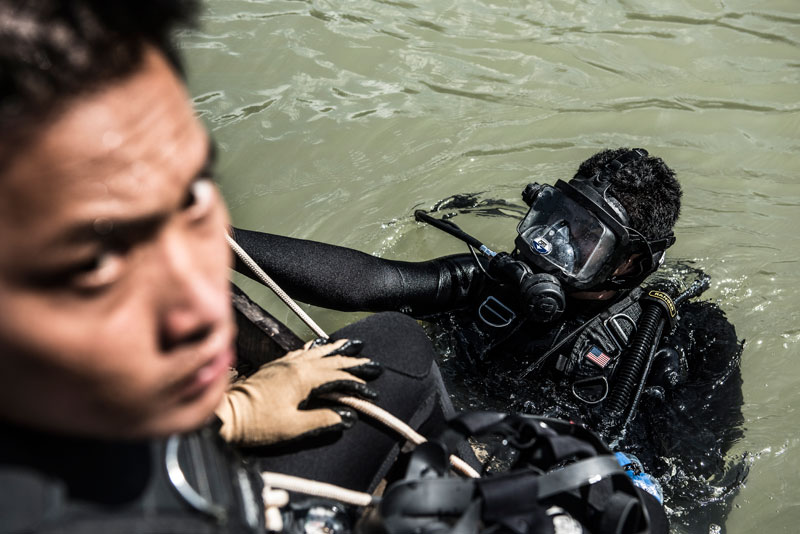Over 40 years after the U.S. Army withdrew from Southeast Asia, Cambodia’s first team of underwater deminers, some of whom were unable to swim two years ago, on Thursday pulled a live 500-pound bomb from the floor of the Mekong River, a deadly souvenir of the 2.7 million bombs U.S. warplanes dropped on the country.
Since records began in 1979, almost 20,000 Cambodians have lost their lives to unexploded ordnance and mines, in part a brutal legacy of the U.S. strategy to win its war with Vietnam by dumping millions of tons of bombs on neighboring countries. Decades of civil war also left the country littered with deadly landmines.

At the bottom of the Mekong River, there is estimated to be more than 2,000 tons of munitions lurking under the muddy water that was sunk under fire as U.S. boats ferried military supplies from the Vietnam border along a perilous 100-km stretch of river to Phnom Penh.
Until two years ago, there was nothing Cambodia could do but leave these threats where they lay, as underwater demining is a highly dangerous job, and Cambodia lacked anyone with the specialist skills to take it on.
The Cambodian Mine Action Center (CMAC) and the Golden West Humanitarian Foundation, a demining charity funded by the U.S. government, advertised for recruits for Cambodia’s first ever team of underwater divers two years ago.
On Thursday, after grueling tryouts and intensive training, the team successfully removed their first bomb, a U.S.-manufactured MK82 submerged under seven meters of muddy water, as media watched on from a safe distance away.
“This is the first time that an underwater dive team for demining has ever been set up from scratch —it’s just never been done before,” Allen Tan, country director of Golden West, said as the divers worked underwater in Kandal province’s Lvea Em district.
According to Mr. Tan, the public safety risk—despite the containment of water—is significant and if a fisherman caught the bomb with his net, the blast would destroy his boat and likely take his life.
The divers worked in almost zero visibility with torches to affix the remote lifting equipment that would buoy the bomb to the surface. At 11 a.m., a balloon broke the calm surface and was then dragged to the river bank.
One of the divers, 27-year-old Lorn Sarat, said that despite toiling to remove a live bomb from the water, he was unafraid.
“When I went into water, I searched for the bomb and then we attached a balloon on and I dug around it to remove the mud surrounding the bomb,” Mr. Sarat said. “I was not afraid because I have trained many times and know the strategy and techniques about how to remove bombs.”
Despite successful efforts by the government and demining charities to reduce casualties, UXOs continue to kill and maim, with 157 casualties recorded in 2014 including 21 deaths. And despite Mr. Sarat’s fearlessness, demining is a dangerous job—in May last year, two Cambodian deminers were killed when an unexploded device detonated in Battambang province.
Besides the complication of working underwater, Mr. Sarat has had another challenge to overcome.
“Before I was recruited as a CMAC diver, I could not swim,” he said. “They had to teach us how to swim as well as the techniques to demine, but after one month I had learned to swim and within four to five months, I was much better.”
Sok Chenda, the CMAC dive team leader who defused the bomb as it lay on the red dirt, said the task was more essential than ever as Cambodia develops.
“This job is very dangerous because we cannot see [the bomb], we can only use our hand to touch and feel it,” he said. “But bridges and ports can only be built if there are no bombs underwater.”
(Additional reporting by Simon Henderson)
Correction: A previous version of this article incorrectly stated the number of people recorded to have died in Cambodia from mines and unexploded bombs since 1979 was 64,000. The correct figure, as of February, was 19,708.